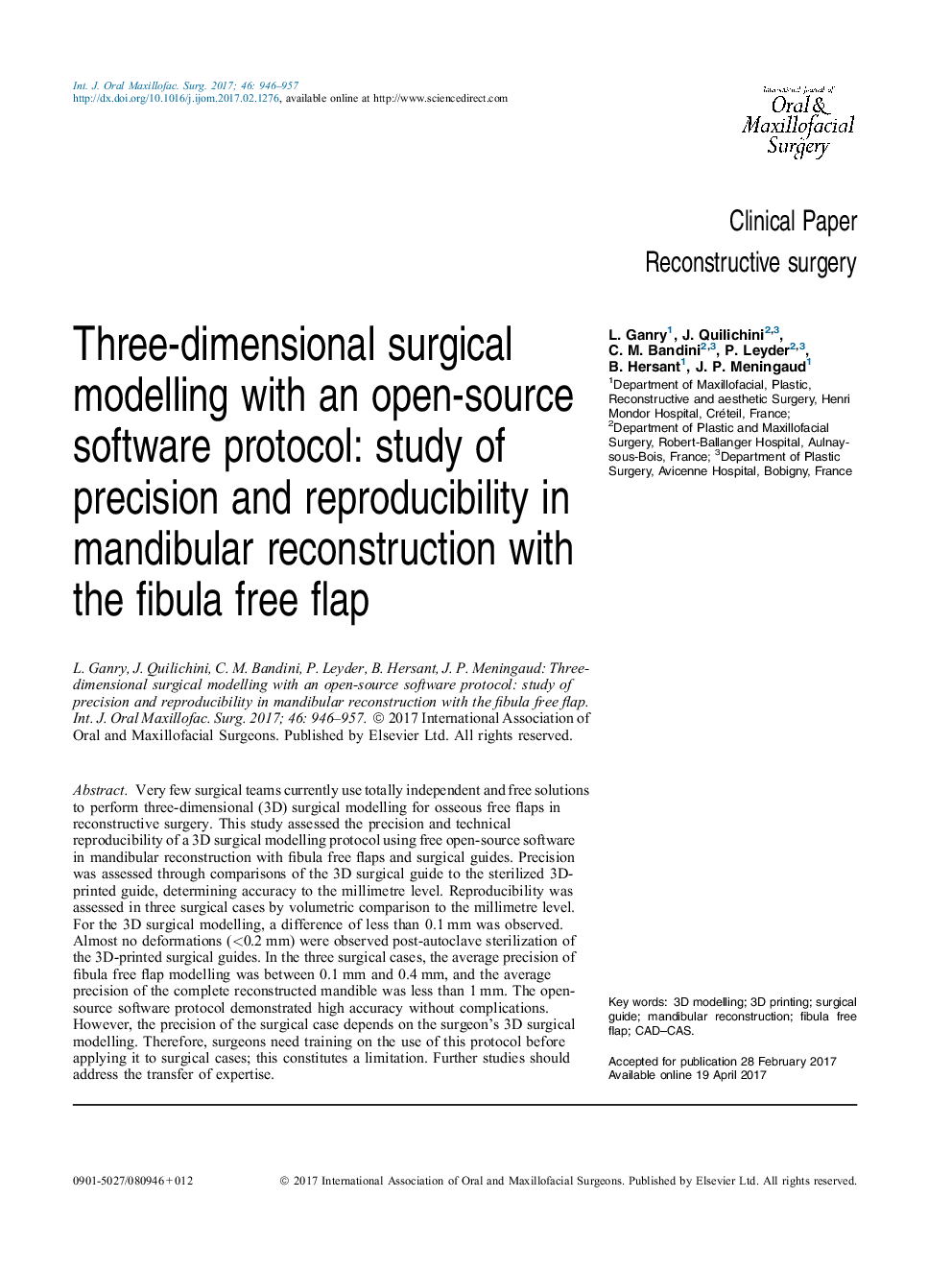| Article ID | Journal | Published Year | Pages | File Type |
|---|---|---|---|---|
| 5638841 | International Journal of Oral and Maxillofacial Surgery | 2017 | 12 Pages |
Very few surgical teams currently use totally independent and free solutions to perform three-dimensional (3D) surgical modelling for osseous free flaps in reconstructive surgery. This study assessed the precision and technical reproducibility of a 3D surgical modelling protocol using free open-source software in mandibular reconstruction with fibula free flaps and surgical guides. Precision was assessed through comparisons of the 3D surgical guide to the sterilized 3D-printed guide, determining accuracy to the millimetre level. Reproducibility was assessed in three surgical cases by volumetric comparison to the millimetre level. For the 3D surgical modelling, a difference of less than 0.1Â mm was observed. Almost no deformations (<0.2Â mm) were observed post-autoclave sterilization of the 3D-printed surgical guides. In the three surgical cases, the average precision of fibula free flap modelling was between 0.1Â mm and 0.4Â mm, and the average precision of the complete reconstructed mandible was less than 1Â mm. The open-source software protocol demonstrated high accuracy without complications. However, the precision of the surgical case depends on the surgeon's 3D surgical modelling. Therefore, surgeons need training on the use of this protocol before applying it to surgical cases; this constitutes a limitation. Further studies should address the transfer of expertise.
